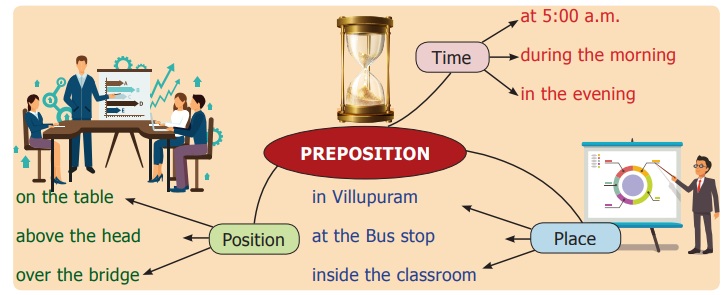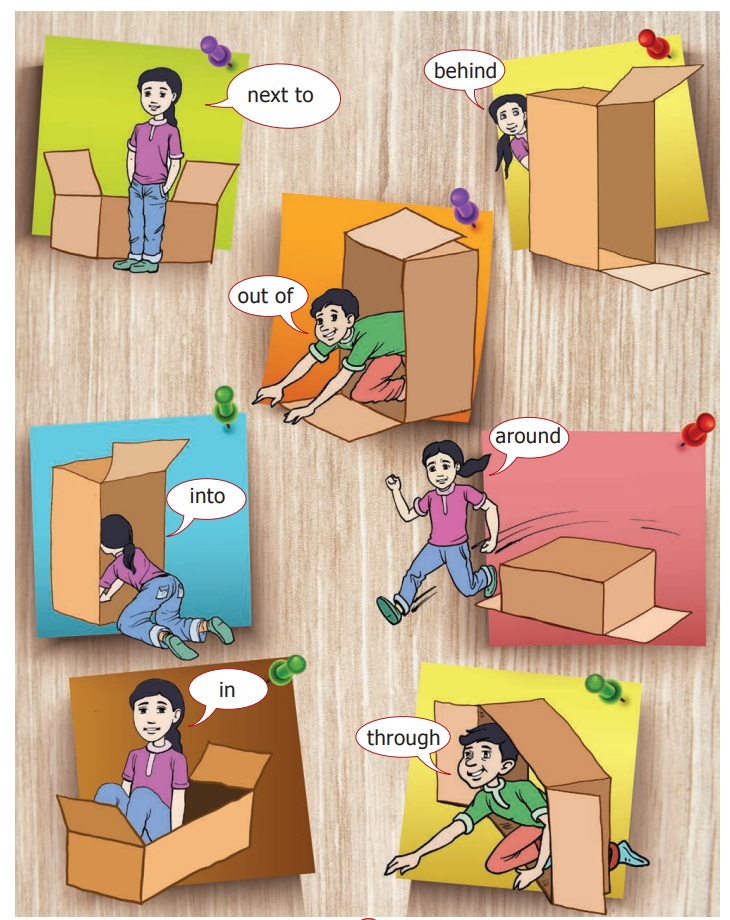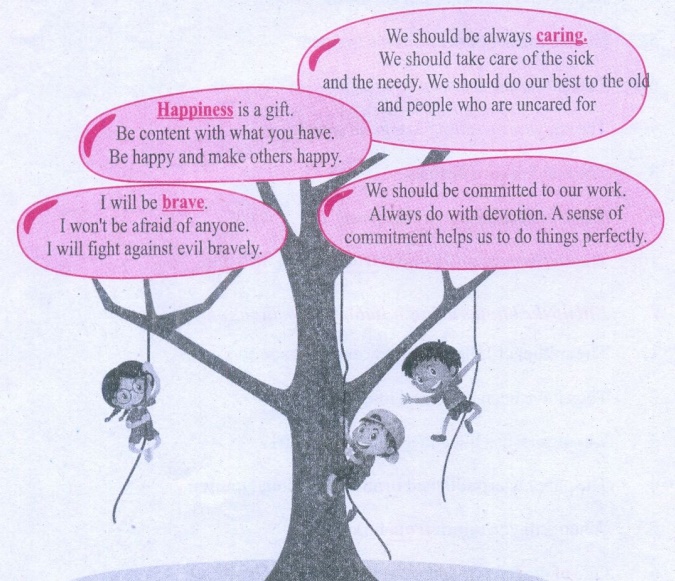English : Term 1 Unit 3 : Prose : A Prayer to the Teacher
Warm Up
Read the clues, guess the profession and fill in the crossword puzzle.


Across
2. Teaches students
4. Helps doctors and patients
6. Builds houses according to a plan
9. Protects the country
10. Gives ticket to passengers
Down
1. Gives treatment to animals
3. Grows crops
5. flies an aircraft
7. Plays a musical instrument
8. Stitches clothes
* Which is your favourite profession?
_____________
* When you grow up, what do you want to become? Why?
_____________
GLOSSARY
1. Syllabi: plural of syllabus
2. Inclusion: all people being valued, irrespective of differences
GLOSSARY
1. cut throat: competitive
2. less privileged: disadvantaged
3. animate: living
4. fend: look after
5. critical: extremely important
GLOSSARY
1. Indiscriminate: without careful judgement
2. consumerism : the protection or promotion of the interests of consumers
3. destruction: the action of damaging or destroying something
4. engulf: eat or swallow the whole
5. scavenger bird: anything that feeds on dead animals (example :crow)
6. perch: to rest on / to stay on
GLOSSARY
1. Enslaved: make someone a slave
2. Commercial: money minded
3. Contemplate: think deeply about something
GLOSSARY
1. Bigotry: intolerance towards others with a different opinion
2. Illuminated: light up
Questions Answers
I. Which of these statements do you find in the speech?
1. Inclusion is essential for us to do well in life. True
2. We should neglect others. Not found
3. Communicate politely with the less privileged. True
4. Teachers teach us to communicate well. True
5. Effective Communication is inessential to excel in life. Not found
II. Read the statements. Tick ✓ the correct words. You can tick more than one.
1. We should develop the ability to learn from______.
__ self ✓ others ✓ books
2. Teachers help me to learn ____________ things .
✓ new __ bad ✓ difficult
3. Teach me to appreciate __________.
✓ nature __ destruction ✓ small creatures
4. We should learn to _________questions.
✓ ask ✓ answer discard
III. Answer the following questions in a sentence or two.
1. What is inclusion? Why is it important?
Inclusion is the feeling to treat everything around us as our own. It helps us to feel for others and protect the surroundings as our own. Once we learn inclusion we will not pollute the road or ignore the needs of children around us.
2. What is good or effective communication ?
Good communication has the simplicity of a child. It helps us to talk to people who cannot speak or hear and those who are less gifted and less privileged. Good communication helps us to talk to our predecessors and successors and animate and inanimate things.
3. What should we learn from our teachers?
We should learn how to learn to learn. We should learn newer and more difficult things.
4. What kind of learning brings joy to you ?
We should learn newer ways to learn. This kind of learning process gives us joy.
5. In what ways are we doing injustice to nature ?
We cut down trees. We kill small insects with the use of fertilizers and pesticides. Our consumerism upsets the balance in nature and causes imbalances.
6. What do you need to learn to live a good life in this world?
We should learn to go beyond our text books and syllabus. We should learn inclusion which is important for us to do well in life. Breaking the barriers of boundary we should include everything around us and treat them as our own.
7. How does the ability to question help us?
The ability to ask questions helps us to get answers. Once we get the answers we can explore how to establish a better order of things. We learn to be accountable and we realize we can be questioned too. In that exchange, truth will emerge.
8. What do you think are the two most important lessons that the speaker mentions?
We should learn the power of silence but we should also know how to raise our voice to protect truth. We should give up religious bigotry and intolerance and develop a world view of things.
IV. Answer the following questions in detail.
1. What are the skills / values a teacher should teach their students to live in this competitive world?
A teacher should teach us to speak and write clearly. This will help us to convey what we feel. We should learn to communicate with the simplicity of a child. We should be able to communicate with those who cannot speak or hear and those who are less gifted and less privileged. We should learn to communicate with our predecessors and successors and things animate and inanimate. We should learn to fend for ourselves. As learning is a continuous process we should go on learning newer and more difficult things. Learning new ways to learn makes learning a joy for us.
2. What kind of a life do you want to lead in this world?
Poverty, disease and hunger are common to all nations. We should remember this fact and give up religious bigotry and racial indiscrimination. We should break free from boundaries and learn to love our fellow human beings. We should learn to appreciate diversity and dialogue. Words such as ‘foreign’ and ‘foreigner’ should be removed from our vocabulary. We should not remain a foreigner and we should not treat anyone as a foreigner. We should develop a world view of things and treat our fellow human beings with love and affection.
Vocabulary
Prefix and Suffix
A. Match the suitable prefix and suffix to create new words of your own. One has been done for you.

B. Refer to your dictionary. Add a prefix or suffix to the following words and find their antonyms.
1. privileged – underprivileged × common
2. animate – discrimination × indiscriminate
3. discriminate – discrimination × indiscriminatel
4. empty – emptily × fuld
5. communicate – communication × withhol
6. learn – learner × teach
Language Check Point
Don’t Say: She aimed on the target.
Say: She aimed at the target.
Note: Use the preposition ‘at’ to denote direction. (e.g.) Throw at
Don’t Say: We arrived to the village at night.
Say: We arrived at the village at night.
Note: Use ‘arrive’ in with large cities and countries. (e.g.) Mr.Balu has arrived in India
Don’t Say: I walk by foot.
Say: I walk on foot.
Note: ‘On’ is used for actions involving body parts, ‘By’ is usually used to mention the means of transport.
Don’t Say: I had the pleasure to meet him.
Say: I had the pleasure of meeting him.
Note: Also ‘take pleasure’ in helping others
Listening
C. Listen to the story and fill in the blanks by selecting the right option.
1. Raj was upset as he had done poorly (well/poorly) in his English test.
2. His grandmother gave him a pencil. (pen/pencil)
3. Granny compared Raj (Raj/Ravi) with the pencil.
4. Ravi’s pain of not doing well in his test was compared with sharpening of pencils. (sharpening/writing)
5. Raj understood that failures are stepping stones to success. (success/climbing)
Speaking
D. Divide yourself into groups of five students. Read the story. Prepare cat and rat masks for the following story and enact it in your class.
The Scared Little Mouse – Hickory Dickory…
Once there was a mouse that was very afraid. One day, a big cat was chasing him. The mouse was running as fast as he could to save his life. The mouse saw a big grandfather clock. It climbed up the clock. It reached the top and sat down to rest.

Not long after that, the clock struck one, ‘Dong!’ The mouse had such a shock that he ran down the clock.
Moral of the story:
You should be courageous when facing certain issues. Otherwise even a small creature will threaten you and take you for granted. You should have more courage and boldness to face the dangers of life. That alone will keep you away from enemies and dangers.
Grammar
Preposition: A preposition comes before a noun or pronoun in a sentence and shows its relationship to another word or part of the sentence.
Prepositions can be classified into three groups.

PICTO GRAMMAR
Look at the pictures given below. Read the prepositions and do the actions.

E. Look at the pictures. Pick out the right preposition and fill in the speech bubbles given below.

USE GRAMMAR
F. Read the following sentences carefully and underline the preposition.
1. Julian placed her lunchbox inside her bag.
2. Vinothini left the house before sunrise.
3. Ben saw Daisy playing across the road.
4. Hema keeps all her teddy bears on top of her wardrobe.
5. Divya hid the sweets behind her back.
6. Sudha fell over during the basketball match.
7. Madhusudhan checked to see if his keys had fallen underneath his chair.
8. Mrs Meena asked the children to go into her classroom.
9. After lunch, the children were allowed to play.
10. Saravanan climbed onto the horse.
G. Complete the following sentences using appropriate prepositions.
1. Is your mother …………………. home?
a) In
b) at
c) on
2. There is unity in diversity ………………… the people.
a) among
b) between
c) within
3. He discussed the problem …………………. his parents.
a) with
b) to
c) for
4. Lithisha was praised ……………….. her father.
a) with
b) for
c) by
5. Can you finish the work ………………….. tomorrow?
a) by
b) in
c) within
6. He has been absent ………………….. last week.
a. since
b) for
c) by
Answer: 1. b) at 2. a) among 3. a) with 4. c) by 5. a) by 6. a) since
H. Fill in the blanks using suitable prepositions from the box. Some options can be used more than once.
across with on to by since from about into at during
1. What do you do during weekends?
2. I am going to my village on Sunday.
3. I haven’t met my friends since December.
4. Run across the street and get me the ribbon.
5. He told me in detail about the incident.
6. This picture was drawn by the girl with charcoal.
7. The car was travelling at a great speed.
8. The ball fell into the lake.
9. There is a bridge across the river.
10. The conference will be held from 10 a.m. to 5 p.m.
I. Fill up the blanks using suitable prepositions on your own.
1. The soldier climbed upon a horse and rode away.
2. They have been here for a long time.
3. Kumaravel has lived in this city since 2012.
4. The paper was published in an International journal.
5. When will you return from home?
6. One of the four students wrote the answers correctly.
7. This fruit is from the Mexican capital.
8. The head office is at Nungambakkam. It is on College Road. As you go towards the station, the office is on the right side.
9. The sailors were taken into the forest and made to walk about 10 miles.
10. The girl standing next to/near me was sneezing.
Writing and Creative Writing
WRITING
J. Fill in the value trees with the best qualities you like to follow in your life from the given list. Write a few lines about your favourite quality in the box.



Best qualities in life
Affectionate, Cooperative, Gratitude, Loving, Responsible,
Ambitious, Courageous, Happiness, Loyal, Self-confident,
Brave, Dependability, Helpfulness, Good manners, Self-control,
Calm, Diligence, Honest, Patriotic, Self-esteem,
Caring, Enthusiastic, Humble, Peaceful, Sensitive,
Cheerful, Fairness, Imaginative, Perseverance, Sincerity,
Committed, Faithfulness, Intelligent, Polite, Successful,
Compassionate, Flexible, Joyful, Positive, Tolerant,
Concerned, Forgiveness, Kind, Rational, Truthful,
Confident, Generosity, Leader, Resourceful, Versatile,
Contented, Giving, Logical, Respect, Witty,
My favourite quality is… (few above)
CREATIVE WRITING
A limerick is a type of a silly poem with five lines. They are often funny or nonsensical. Limericks were made famous by Edward Lear, a famous author who wrote the “Book of Nonsense” in the 1800s. This was an entire book of silly limericks.
How to write a limerick poem?
* The first, second and fifth lines rhyme with each other and have the same number of syllables (typically 8 or 9).
* The third and fourth lines rhyme with each other and have the same number of syllables (typically 5 or 6)
* Limericks often start with the line “There once was a…” or “There was a…”
Example of an 8,8,5,5,8 syllable limerick:

STAR
There once was a wonderful star
Who thought she would go very far
Until she fell down
And looked like a clown
She knew she would never go far.
Kaitlyn Guenther
* Now you can try your own limerick.
K. Fill in the template given for limerick.
There once was a (8 syllable) brilliant boy (8 syllable)
Who bought a tasty kinder joy (8 syllable)
Until it rolled down (5 syllable)
Boy who filled with frown (5 syllable)
He knew that he could make a toy (8 syllable)














